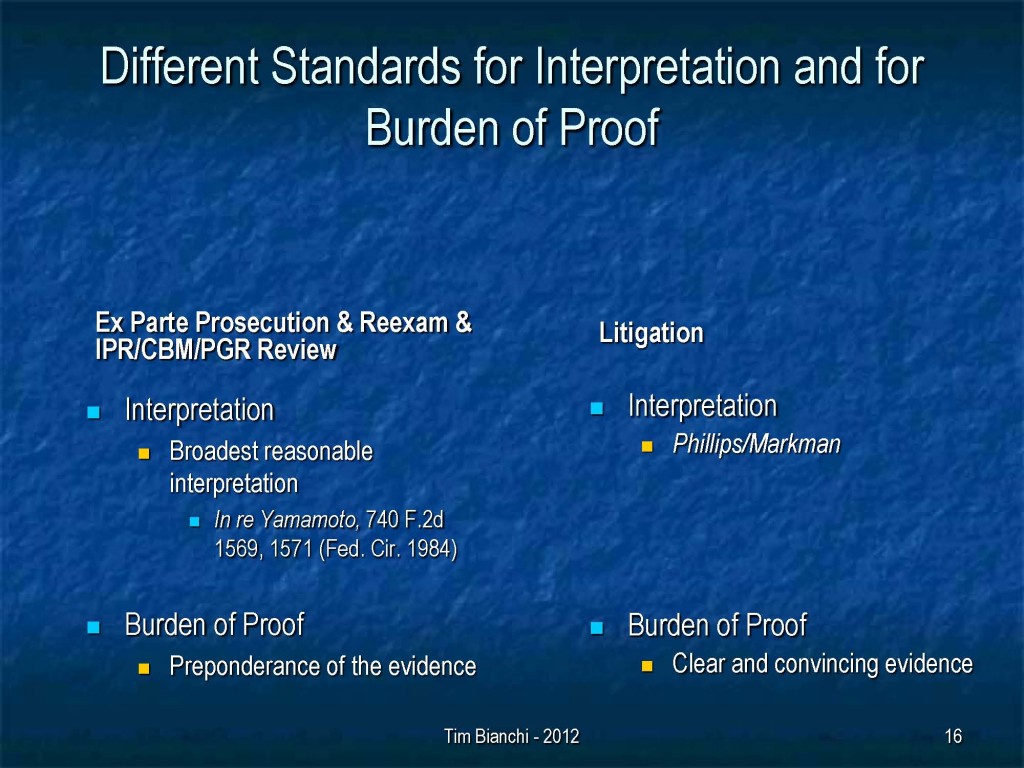Parallel Litigation and PTAB Review Create Complex Interplay of Patentability and Validity
A company called CoreLogic Solutions, LLC owns U.S. Patent No. 5,361,201, relating to a process for appraising real estate property. The ‘201 patent was filed on Oct. 19, 1992 and issued on Nov. 1, 1994. Absent some kind of patent term extension, the ‘201 patent will expire soon. The ‘201 patent is the subject of both a litigation and a covered business-method (CBM) patent review with an accused infringer/petitioner Interthinx, Inc. The litigation is CoreLogic Information Solutions, Inc. v. Fiserv, Inc., et al., Civil Action No. 2:10-CV-132-RSP (E.D. Texas). The CBM patent review is CBM2012-00007. Claim 1 of the ‘201 patent is as follows:
1. A computer-implemented process for appraising a real estate property, comprising the steps of:
-
collecting training data;
-
developing a predictive model from the training data;
-
storing the predictive model;
-
obtaining individual property data for the real estate property;
-
generating a signal indicative of an appraised value for the real estate property responsive to application of the obtained individual property data to the stored predictive model;
-
developing an error model from the training data;
-
storing the error model; and
-
generating a signal indicative of an error range for the appraised value responsive to application of the individual property data to the stored error model.
PACER reveals a jury verdict form just entered in the Texas litigation on September 28, 2012, where Interthinx was found to not have infringed claims 1 and 10 of the ‘201 patent, and that Interthinx failed to show claims 1 or 10 invalid. This jury decision comes only 9 days after the CBM petition was filed in the USPTO/PTAB.
What will happen next is anyone’s guess. Interthinx may elect to wait and see if a CBM trial is instituted. It may settle with CoreLogic to avoid appeal. Or it may do a little of both. It may also pursue the CBM in an effort to challenge the patent and extinguish any possible reversal and remand by the Federal Circuit on appeal of the trial court action by CoreLogic.
If the CBM PTAB trial is pursued, it will be interesting to see how the PTAB regards a prior litigation decision, such as the one in this case, given the differences between administrative review and litigation. The differences in interpretive standards and burdens of proof are summarized in the slide below:
We already learned from cases such as In re Baxter International (Fed. Cir. 2012), that the PTO can find a patent unpatentable even after the Federal Circuit affirmed a lower court decision that the patent was not invalid. As stated in Baxter:
“[T]he PTO in reexamination proceedings and the court system in patent infringement actions “take different approaches in determining validity and on the same evidence could quite correctly come to different conclusions.’[citing Swanson, quoting Ethicon]”
But that does not mean that the PTAB trial judges will ignore district court decisions and that courts will ignore PTAB decisions. It remains to be seen how much one process defers to the other.
Back to All Resources


